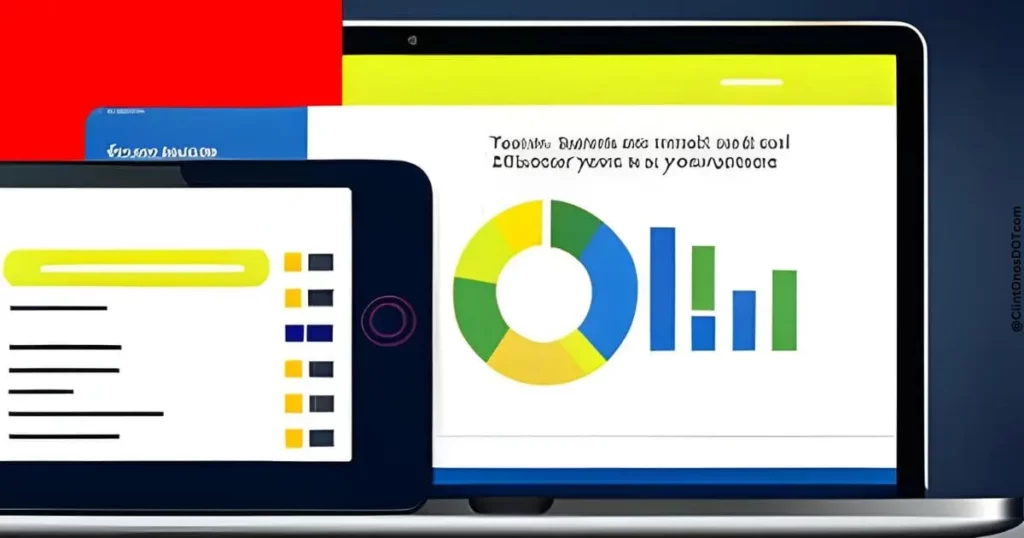As an affiliate marketer, you’re always looking for ways to improve your CPA marketing campaigns. But with so many factors to consider, it can be overwhelming to know where to start.
We already discussed CPA Marketing extensively in one of our recent articles “CPA Marketing Demystified [Gurus Don’t Want You to See This]” I invite you to read it.
In this article, we’ll discuss specific tactics for improving conversion rates, reducing bounce rates, and increasing ROI in CPA marketing.

| Key Takeaways |
|---|
| CPA marketing is a performance-based marketing model that rewards affiliates for driving specific actions or conversions. |
| Optimizing CPA marketing campaigns is essential to achieve a better return on investment (ROI). |
| Conversion rate is a critical metric in CPA marketing, and optimizing it requires tactics such as using micro-moments, incorporating interactive content, and leveraging customer feedback. |
| Bounce rate is another crucial metric in CPA marketing, and optimizing it requires tactics such as optimizing websites for local search, incorporating effective CTAs, and utilizing customer segmentation. |
| ROI is the ultimate goal of any CPA marketing campaign, and it can be improved by analyzing data, optimizing landing pages, and reducing CPA costs. |
| Continuously tracking and measuring campaign performance and optimizing ad spend through budget allocation and bidding strategies are also crucial for improving CPA marketing campaigns. |
| Artificial intelligence and gamification can also be used to optimize CPA marketing campaigns. |
| Implementing a comprehensive strategy for optimizing CPA marketing campaigns is crucial for success in the field. |
| Future trends and developments in the field of CPA marketing optimization include the use of advanced data analytics, machine learning, and automation technologies. |
Define CPA Marketing
Before we dive into the specifics, let’s first define what CPA marketing is. CPA stands for cost per action, which means that you only pay when someone takes a specific action, such as filling out a form or making a purchase. CPA marketing is a type of affiliate marketing where you promote offers and earn a commission for each completed action.
Importance of Optimizing CPA Marketing Campaigns
Optimizing your CPA marketing campaigns is crucial for several reasons.
First, it helps you increase your conversion rates, which means more money in your pocket.
Second, it helps you reduce your bounce rates, which can negatively impact your quality score and ultimately your ad spend.
Finally, optimizing your campaigns can help you increase your ROI, which is the ultimate goal of any marketing campaign.
Improving Conversion Rates in CPA Marketing Campaigns
Conversion rate is the percentage of people who complete a desired action, such as filling out a form or making a purchase, out of the total number of people who clicked on your ad or visited your landing page.
Below are some tips for improving your conversion rates:
Using Micro-Moments
Micro-moments are short periods of time when people use their mobile devices to solve a problem, learn something new, or make a decision. By creating content that addresses these micro-moments, you can capture the attention of your target audience and improve your conversion rates.
Optimizing Ad Frequency
Showing your ads too frequently can lead to ad fatigue and ultimately lower your conversion rates. On the other hand, not showing your ads enough can lead to missed opportunities. Finding the right balance is key to optimizing your ad frequency and improving your conversion rates.
Incorporating Interactive Content
Interactive content, such as quizzes, polls, and games, can help engage your audience and improve your conversion rates. By creating fun and interactive content, you can increase the time people spend on your site and ultimately improve your chances of converting them.
Optimizing Targeting for Different Demographics
Not all audiences are created equal. By optimizing your targeting for different demographics, such as age, gender, and location, you can improve your conversion rates and ultimately your ROI.
Leveraging Customer Feedback and Surveys
Customer feedback and surveys can provide valuable insights into what’s working and what’s not in your CPA marketing campaigns. By incorporating this feedback into your campaigns, you can make informed decisions that lead to better results.
Utilizing Augmented Reality
Augmented reality can help you create immersive experiences that engage your audience and improve your conversion rates. By using AR technology, you can bring your products and services to life in a way that traditional advertising methods can’t.
Optimizing Landing Pages for Voice Search
Voice search is becoming increasingly popular, and optimizing your landing pages for voice search can help you capture this growing audience. By using natural language and long-tail keywords, you can improve your chances of appearing in voice search results and ultimately improve your conversion rates.
Understanding User Intent
Understanding user intent is key to creating content that resonates with your audience and improves your conversion rates. By using tools like Google Analytics and SEMrush, you can gain insights into what your target audience is searching for and create content that addresses their needs.

Artificial Intelligence and Gamification
Artificial intelligence (AI) is a powerful tool that can help improve CPA marketing campaigns. By using AI, marketers can analyze large amounts of data to gain insights into consumer behavior and optimize their campaigns accordingly.
One example of AI in CPA marketing is predictive analytics, which uses machine learning algorithms to predict which customers are most likely to convert. This information can be used to target those customers with more personalized ads, increasing the chances of conversion.
Gamification is another strategy that can be used to improve CPA marketing campaigns. Gamification involves incorporating game-like elements into the marketing experience to engage and motivate customers.
This can include things like quizzes, challenges, and rewards for completing certain actions. Gamification can help increase engagement and build customer loyalty, leading to higher conversion rates and ROI.
Reducing Bounce Rates in CPA Marketing Campaigns
A high bounce rate can be a major problem for CPA marketing campaigns. If visitors are leaving the site quickly, it means that they are not finding what they are looking for or are not interested in the offer.
Fortunately, there are several tactics that can be used to reduce bounce rates and keep visitors engaged.
Optimizing Website for Local Search
One way to reduce bounce rates is by optimizing the website for local search. This means ensuring that the website is optimized for local keywords and that the business has a strong local presence.
By doing this, the website will appear higher in search engine results for local queries, increasing the chances of attracting local customers who are more likely to convert.
Using Behavioral Targeting
Behavioral targeting is another effective strategy for reducing bounce rates. By analyzing user behavior and preferences, marketers can deliver more personalized content and offers that are more likely to be relevant to the visitor.
This can help keep visitors engaged and increase the chances of conversion.
Optimizing Email Subject Lines
Email marketing can be a powerful tool for driving traffic to CPA marketing campaigns, but if the subject lines are not compelling, recipients may simply delete the email without opening it.
Optimizing email subject lines can help increase open rates and reduce bounce rates. Some tips for optimizing email subject lines include:
- Personalizing subject lines with the recipient’s name or location
- Using action-oriented language
- Creating a sense of urgency or exclusivity
- Testing different subject lines to see which ones perform best
Incorporating Effective CTAs
Calls-to-action (CTAs) are an essential part of any CPA marketing campaign. They are the final step in the conversion process and can make a big difference in whether or not visitors convert.
Effective CTAs should be clear, concise, and compelling, and should use action-oriented language to encourage visitors to take the desired action.
Utilizing Customer Segmentation
Customer segmentation involves dividing customers into groups based on their demographics, behavior, or preferences.
By doing this, marketers can deliver more personalized content and offers to each group, increasing the chances of conversion.
Customer segmentation can also help reduce bounce rates by ensuring that visitors are only seeing content that is relevant to their interests.
Optimizing Ad Copy for Voice Search
With the increasing use of voice search, it is important to optimize ad copy for this type of search.
This means using natural language and long-tail keywords that are more likely to be used in voice search queries.
By doing this, marketers can increase the chances of their ads appearing in voice search results, reducing bounce rates and increasing conversions.

Increasing ROI in CPA Marketing Campaigns
ROI boost is an important aspect of CPA marketing campaign optimization, hence the need to explain each of the components in detail.
Analyzing Data to Continuously Improve Campaigns
Data analysis is a crucial part of optimizing CPA marketing campaigns. By analyzing data, marketers can gain insights into how their campaigns are performing and identify areas for improvement.
There are several metrics that marketers should track when analyzing data, including conversion rates, bounce rates, and ROI. By tracking these metrics over time, marketers can identify trends and patterns in campaign performance and make adjustments accordingly.
One of the most important tools for data analysis in CPA marketing is Google Analytics. With Google Analytics, marketers can track website traffic, user behavior, and conversion rates.
Marketers can also set up conversion tracking to track specific actions that users take on their website, such as filling out a form or making a purchase.
In addition to Google Analytics, there are several other tools and platforms that can be used for data analysis in CPA marketing. These include:
- Facebook Ads Manager: This platform provides insights into ad performance, audience demographics, and conversion rates.
- LinkedIn Analytics: This platform provides insights into ad performance, audience demographics, and engagement rates.
- Twitter Analytics: This platform provides insights into ad performance, audience demographics, and engagement rates.
- Google AdWords: This platform provides insights into ad performance, keyword performance, and conversion rates.
By using these tools and platforms, marketers can gain a more comprehensive understanding of their campaigns and make data-driven decisions to optimize their performance.
Optimizing Landing Pages for Conversion
Landing pages are critical to the success of CPA marketing campaigns. They are the first impression that users have of a campaign, and they can make or break conversion rates. To optimize landing pages for conversion, marketers should consider the following tips:
- Use clear and concise headlines that convey the value proposition of the campaign.
- Include strong and relevant images or videos that capture users’ attention and support the campaign’s message.
- Use a clear and prominent call-to-action (CTA) that encourages users to take the desired action.
- Minimize distractions and keep the focus on the campaign’s message and CTA.
- Use A/B testing to test different versions of landing pages and identify the most effective design and content.
By optimizing landing pages for conversion, marketers can improve conversion rates and maximize the ROI of their campaigns.
Reducing CPA Costs through Testing and Optimization
Reducing CPA costs is a key goal for many marketers, as it can help to increase ROI and make campaigns more cost-effective. One effective way to reduce CPA costs is through testing and optimization.
By testing different elements of a campaign, such as ad copy, images, and targeting, marketers can identify the most effective combinations and optimize their campaigns for maximum performance.
There are several types of testing that marketers can use to optimize their CPA campaigns, including A/B testing, multivariate testing, and split testing.
A/B testing involves testing two different versions of an element to see which performs better, while multivariate testing involves testing multiple elements at the same time to identify the most effective combination.
Split testing involves testing different versions of a campaign with different audiences to identify the most effective targeting strategy.
By using testing and optimization, marketers can reduce CPA costs, improve conversion rates, and maximize the ROI of their campaigns.
Tracking and Measuring Campaign Performance
Tracking and measuring campaign performance is critical to the success of CPA marketing campaigns. By tracking key metrics such as conversion rates, bounce rates, and ROI, marketers can gain insights into how their campaigns are performing and make data-driven decisions to optimize their performance.
To track and measure campaign performance, marketers should set up conversion tracking in Google Analytics or another analytics platform.
They should also track metrics such as click-through rates, engagement rates, and cost per click to gain a more comprehensive understanding of campaign performance.

Optimizing Ad Spend Through Budget Allocation and Bidding Strategies
Effective budget allocation and bidding strategies can significantly impact the ROI of a CPA marketing campaign. By strategically allocating the budget and utilizing bidding strategies, marketers can optimize ad spend and maximize their ROI.
One effective budget allocation strategy is to allocate more budget to high-performing campaigns or channels. By analyzing campaign performance data and identifying the campaigns or channels that generate the most conversions, marketers can allocate more budget to those channels and campaigns to maximize their ROI.
Bidding strategies also play a crucial role in optimizing ad spend. Marketers can use different bidding strategies, such as cost per click (CPC), cost per action (CPA), or viewable cost per thousand impressions (vCPM), depending on their campaign goals and the type of ad they are running.
For instance, if the campaign’s goal is to drive conversions, the marketer can use a CPA bidding strategy to optimize for conversions. On the other hand, if the campaign’s goal is to increase brand awareness, the marketer can use a vCPM bidding strategy to optimize for impressions.
Conclusion
CPA marketing is an effective way for businesses to reach their target audience and drive conversions.
However, to achieve success in CPA marketing, it’s essential to optimize the campaigns continually.
By following the tactics outlined in this article, including improving conversion rates, reducing bounce rates, increasing ROI, and optimizing ad spend through budget allocation and bidding strategies, marketers can create a comprehensive strategy for optimizing CPA marketing campaigns.
It’s important to note that the world of CPA marketing is continually evolving, and new trends and developments are emerging. To stay ahead of the competition, marketers must keep up with the latest developments and continue to experiment with new tactics and strategies.
By implementing a comprehensive strategy for optimizing CPA marketing campaigns, marketers can not only drive conversions but also build a strong brand and establish a long-term relationship with their audience.





![Copy Editing The Right Way and Boost Your Career [Complete Guide]](https://clintonos.com/wp-content/uploads/2023/04/Copy-Editing-The-Right-Way-and-Boost-Your-Career-Complete-Guide-768x402.webp)
